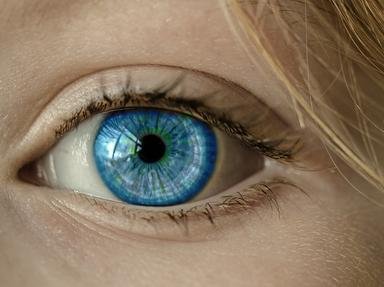Quiz Answer Key and Fun Facts
1. Let's start with some eye anatomy. In order for us to be able to see, light waves must enter the eye, first entering through the clear, domed top layer of the eye. What is this domed surface called?
HINT: It is quite common to donate or receive this part of the eye for transplantation.
2. And what about the coloured part of the eye? What is that called?
3. We all produce tears from our tear ducts, regardless of whether or not we have something to cry about! Of the following options, which is NOT a physiological reason for tear production?
4. If a person has 'heterochromia irides', how are their eyes affected?
5. It is more common for boys to be colourblind than girls.
6. It is said that the eyes are the window to the soul, but they are also the window to a lot more! There are many illnesses and diseases that are not related to the eye directly, but may still affect the eye and cause changes within it. If an eye specialist were to look in to a person's eyes, which of the following diseases could they NOT find evidence of?
7. Two different types of cell in the back of the eye allows us to detect colours and shades of light and darkness. The cells responsible for seeing light contrast are called 'rods'. What are the cells that detect colour called?
8. Eating carrots can help you to see in the dark.
9. As well as damaging your body in other ways, smoking cigarettes also affects the eyes. Which of the following eye illnesses would you not expect to occur as a result of smoking?
10. Although eye surgery and medicine are improving all the time, we still only have two eyes each and need to take care of them! From the options below, what would not be recommended as a step to keep our eyes healthy?
Source: Author
crazy baby
This quiz was reviewed by FunTrivia editor
WesleyCrusher before going online.
Any errors found in FunTrivia content are routinely corrected through our feedback system.

